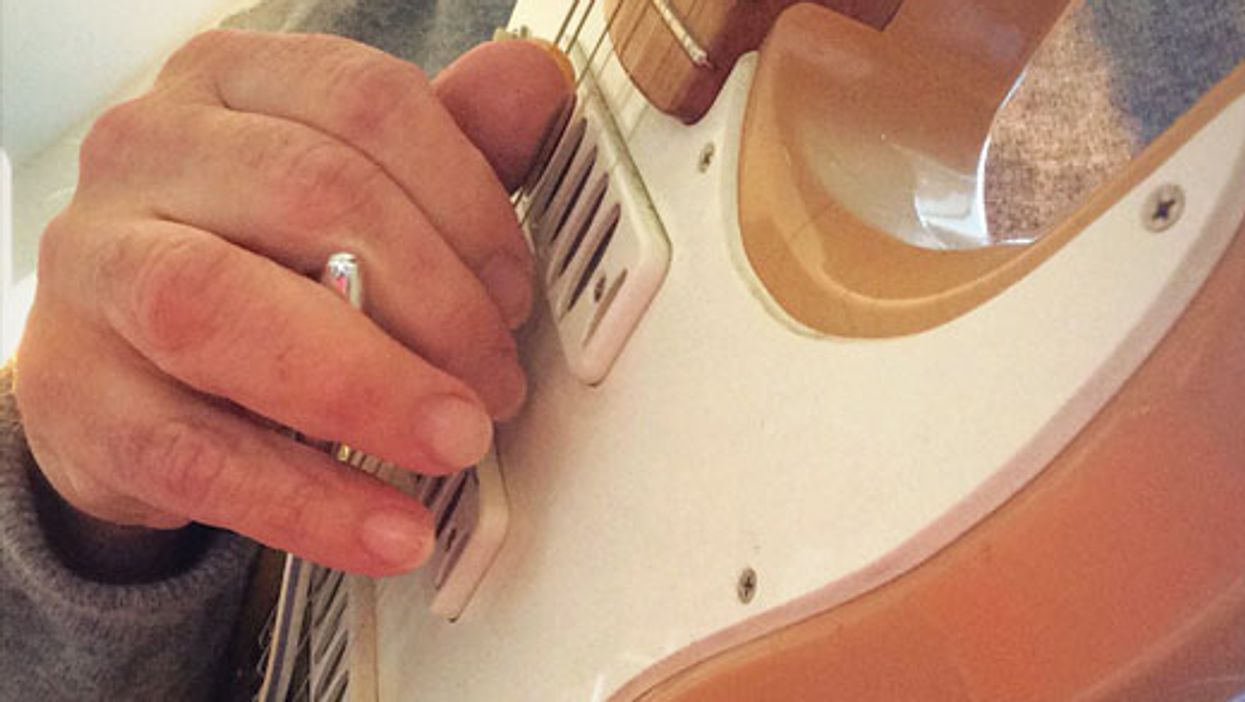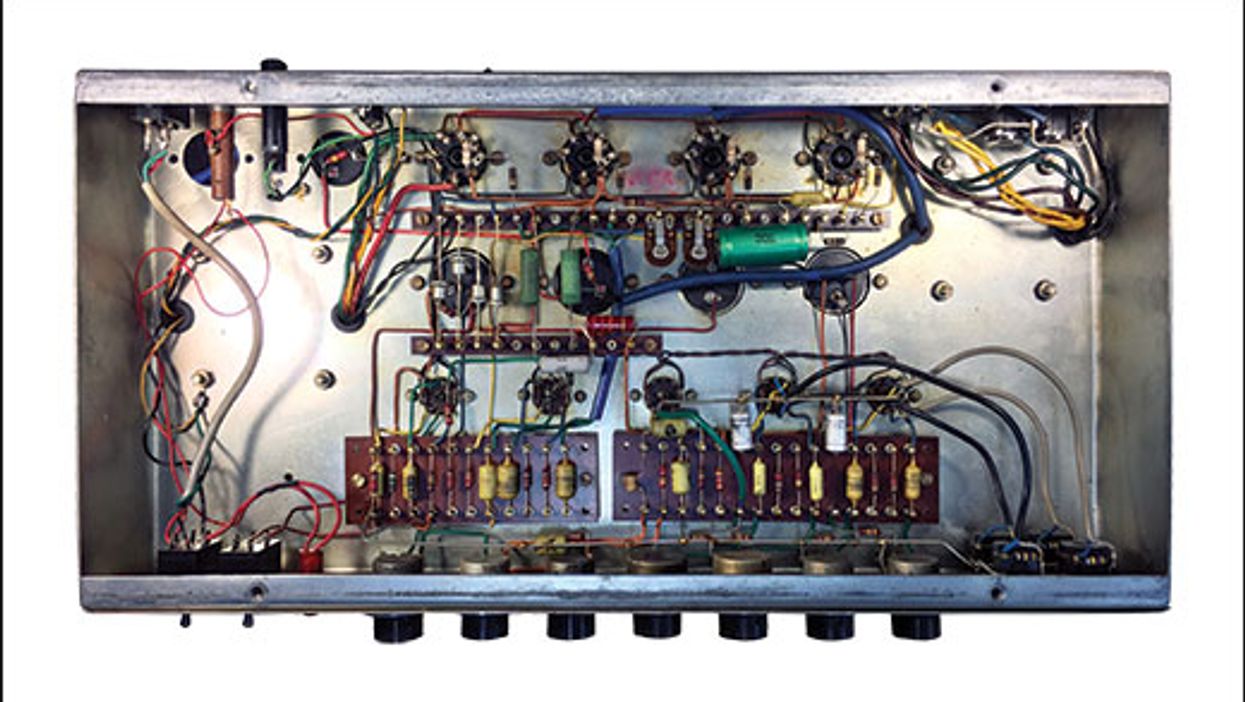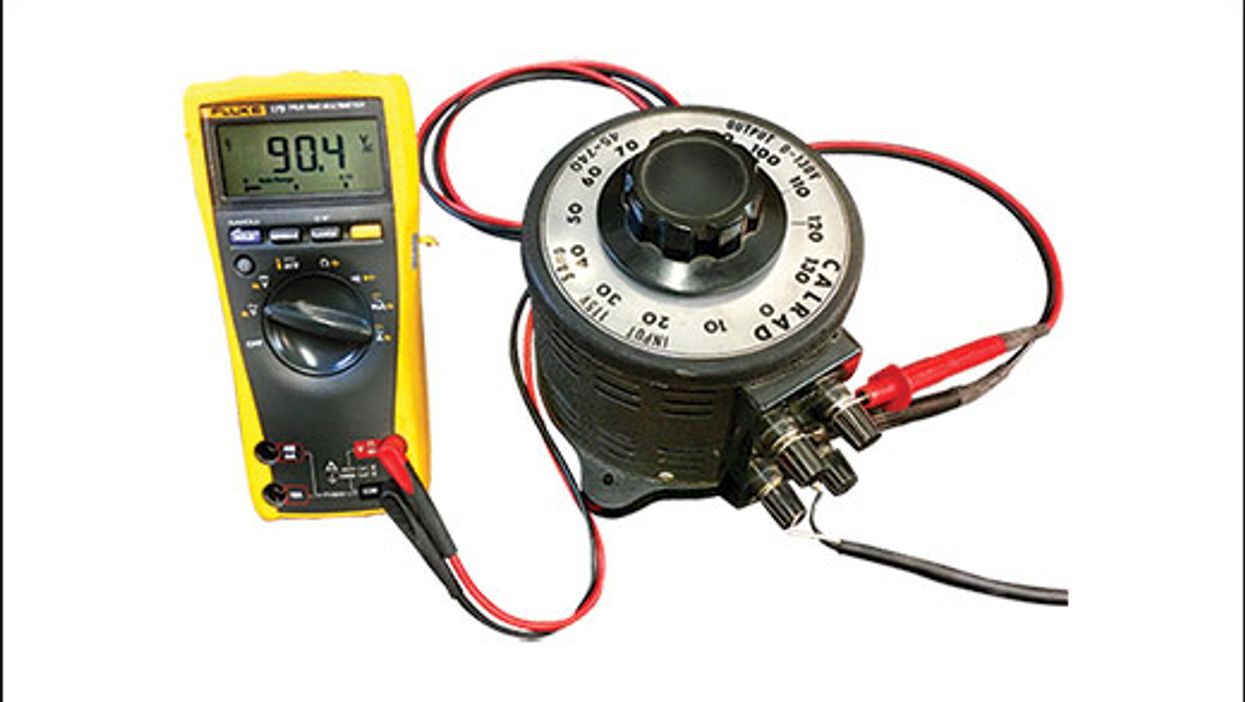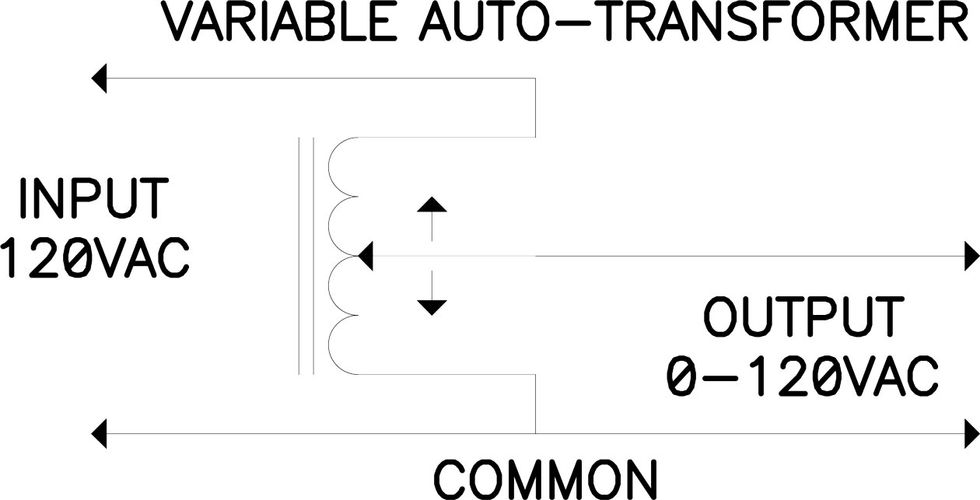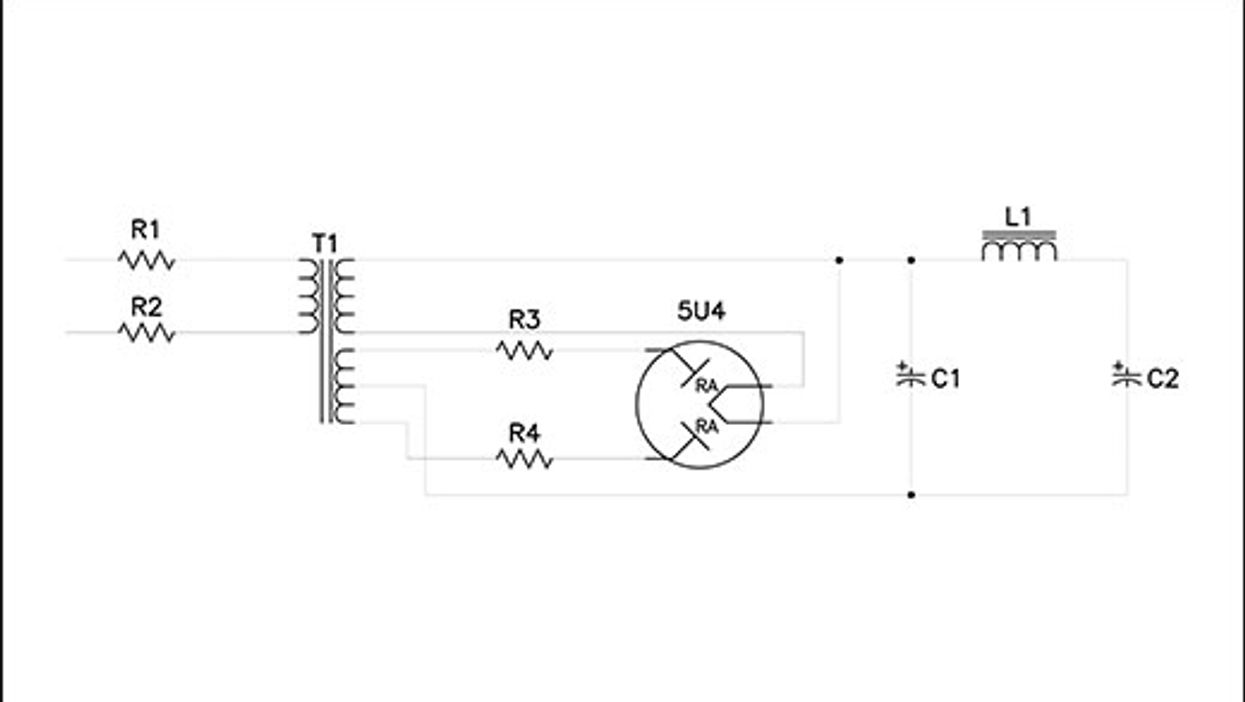What happens from the moment you pick a guitar string to that instant you’re engulfed in amplified sound? It’s all about energy transfer: When you pick a string, the energy from the velocity of a pickstroke becomes energy in the form of string vibration. How hard you pick determines how much energy the string will absorb and then transmit to the pickup, which it does by cutting through the pickup’s magnetic lines of force. How much voltage is generated by the pickup is proportional to how much skin or fingernail you’re willing to sacrifice for the glory of an astounding power chord. Even though there’s a practical limit to the voltage generated by the pickup, as determined by the magnet size, wire diameter, and number of turns, there’s still a respectable amount of potential to work with, and this gives a typical guitar pickup an insanely wide range of sensitivity. You can move from pounding the strings to delicately brushing them to producing barely measurable voltage output by literally blowing on them.
Once you connect your guitar cord to the amplifier, the electrical impulses from the pickup become transformed. Normally, the amplifier’s gain will be more than sufficient to accommodate a wide range of signal levels, and this allows us to explore a full spectrum of dynamic interplay. But it takes a special kind of amp to respond musically to such a vast range of signal input levels at any given control setting.
Guitar amplifier gain stages are capable of high sensitivity to very small signals. When an amplifier’s preamp stages are set to reproduce small signals, a very large transient attack will readily transition into distortion and overdrive territory. And the same goes for the power amplifier stage. The beauty of this phenomenon is that we can set the amp to respond to subtleties in string attack with the guitar volume set low, and then instantly conjure up a whirlwind of sonic fury on demand.
With a tube amplifier, we usually perceive distortion as pleasant, musical, and inspiring—even essential—and we’re often barely aware that we’ve crossed the threshold from clean to distorted sound. In most tube amps, amplifier distortion is so seamlessly associated with the amp’s signature sound that it’s not really considered distortion until you’re in over-the-top territory. This is because our brain identifies certain flavors or “orders” of distortion harmonics as part of the musical structure, whereas it treats others as alien and filters them out to the extent it can. In extreme cases, this filtering process is inadequate and thus leaves unwelcome harmonics exposed. When this happens, we consider the sound to be harsh, intrusive, and unrelated to the musical content.
In Photo 2, the bottom trace shows the same chord, but slammed. This generates a very large difference in level between initial string attack (big hump in the middle of the wave) and string decay (smaller humps to the left and right). Here, the top trace shows how the amp with the same control settings as the clean example reacts to the dynamic attack: It flattens the waveform at maximum pickup level and remains in saturation mode, even though pickup output has decreased significantly.
There’s an elemental difference between a tube guitar amp and other amplifier topologies: In a tube amp, most of the ways it departs from accurate reproduction of the guitar signal are perceived to be additive—they contribute color and complexity to the sonic tapestry. In simple terms, most vintage amps stay cleaner in the preamp, which makes power-amp saturation responsible for the amp’s dominant overdriven voice. Modern amps can produce an avalanche of preamp overdrive. We tend to want to amplify this overdrive with clarity in the power-amp stage, and this results in an amp capable of infinite sustain with a high level of detail and articulation. Of course, a myriad of amp designs stake out territory in the infinite space between these two extremes.
And while tube amplifiers are distinguished from one another in large part by how each stage of amplification distorts or colors the sound relative to every other stage, it’s too simplistic to say that’s all there is to it. Next time, we’ll dive deeper into what differentiates tube amps from other topologies, what gives an amplifier it’s signature personality, and what gives certain guitar-and-amp combinations their timeless appeal.




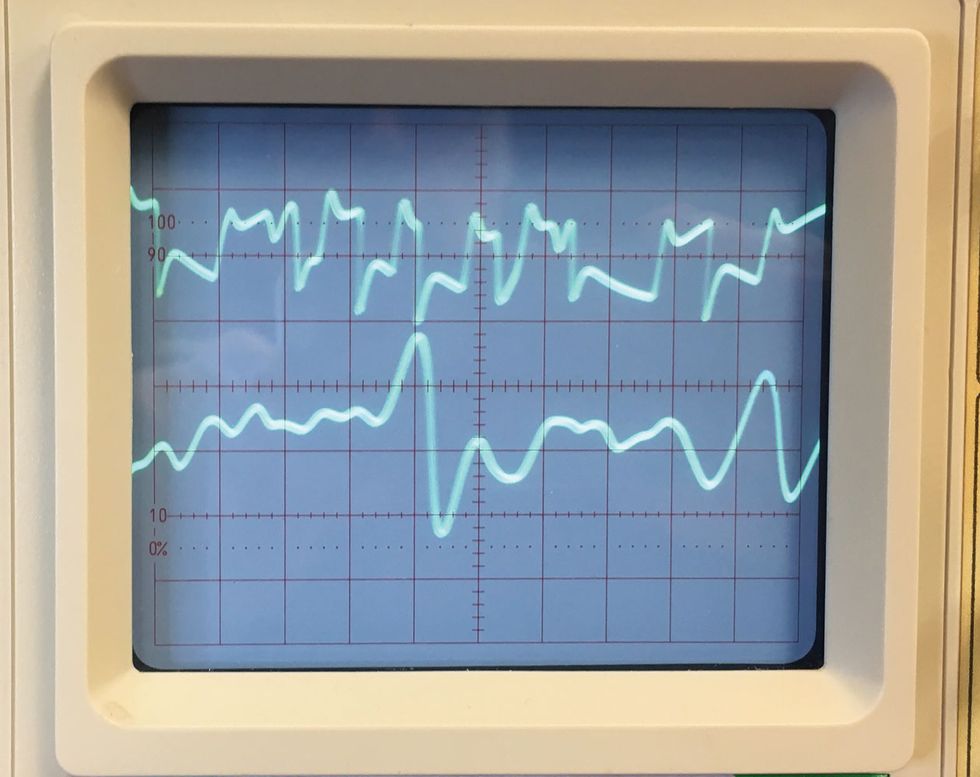




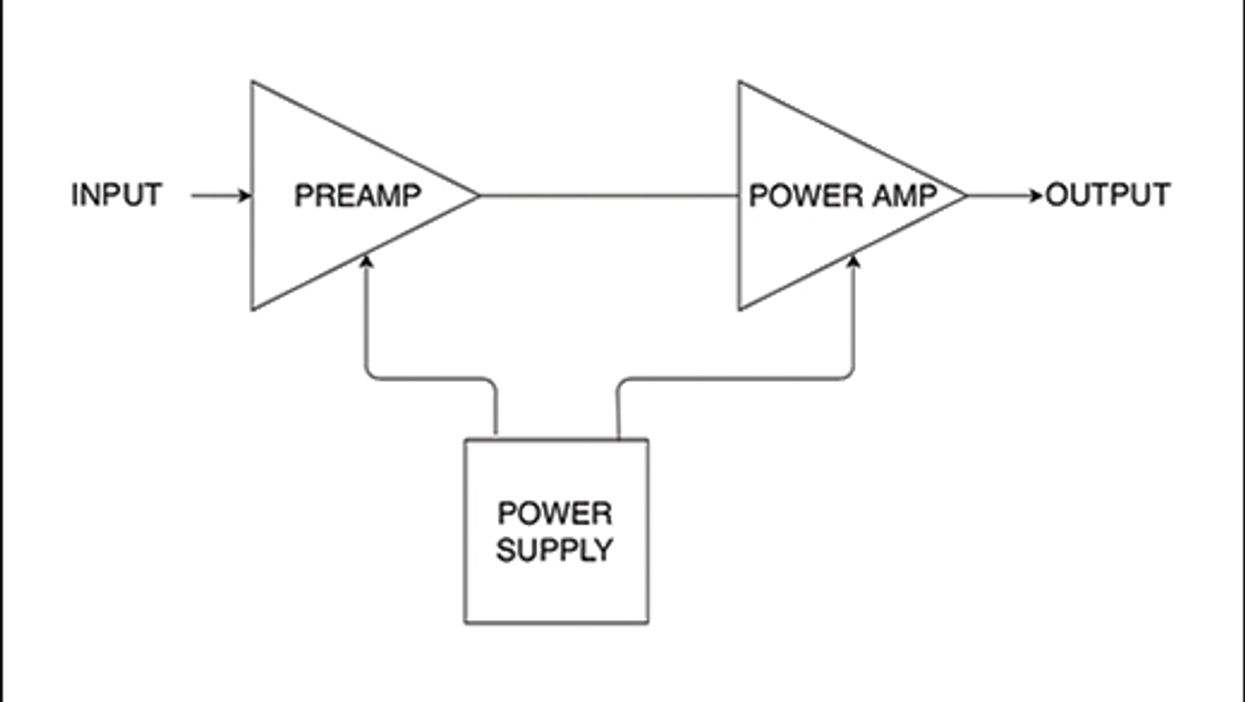
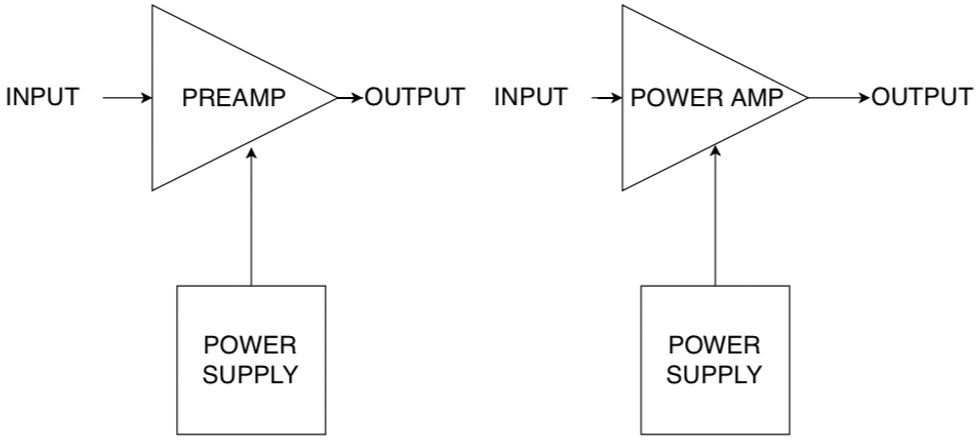


![Rig Rundown: Russian Circles’ Mike Sullivan [2025]](https://www.premierguitar.com/media-library/youtube.jpg?id=62303631&width=1245&height=700&quality=70&coordinates=0%2C0%2C0%2C0)



